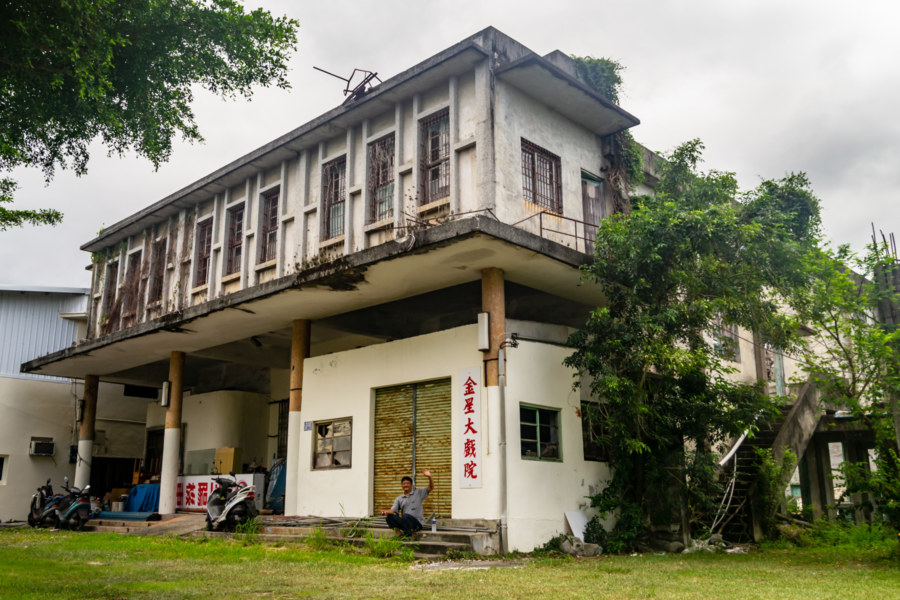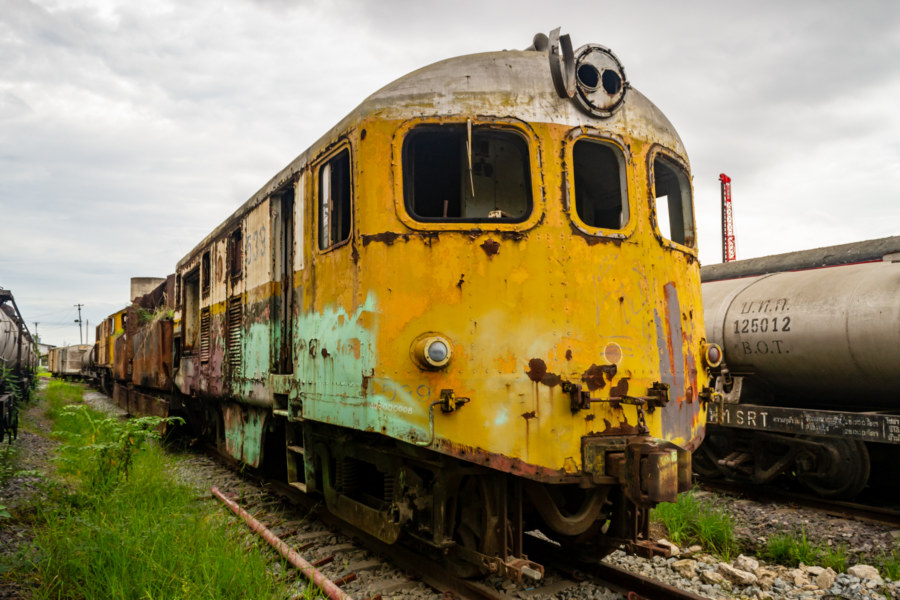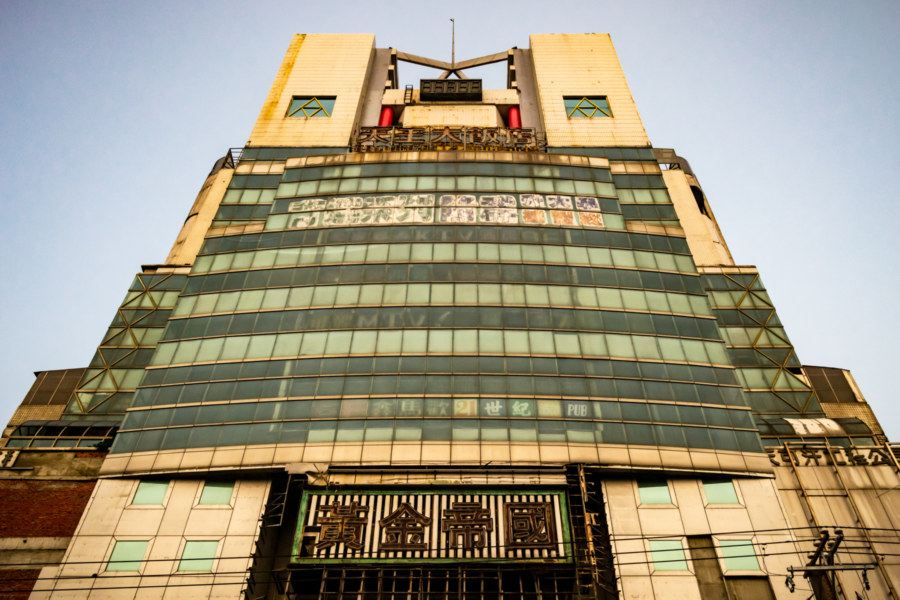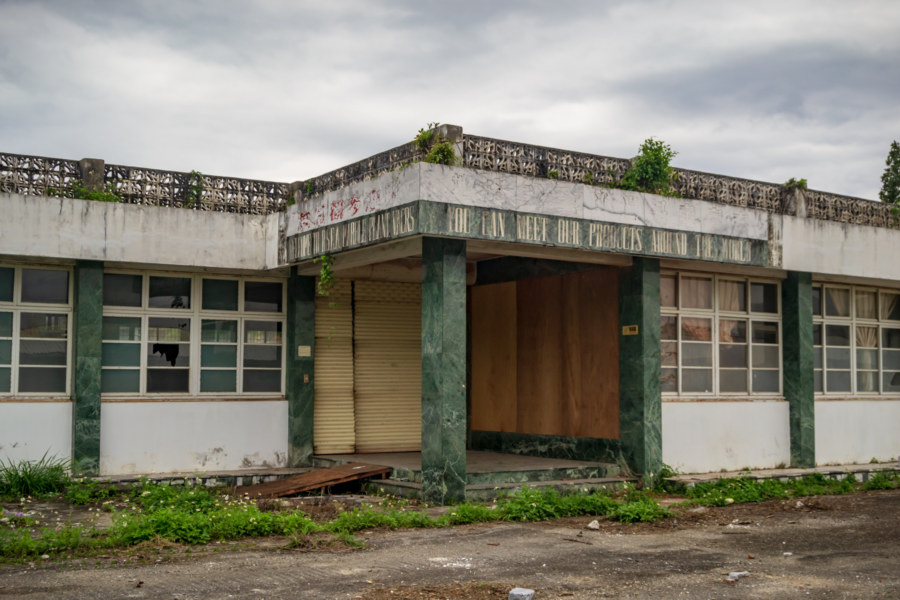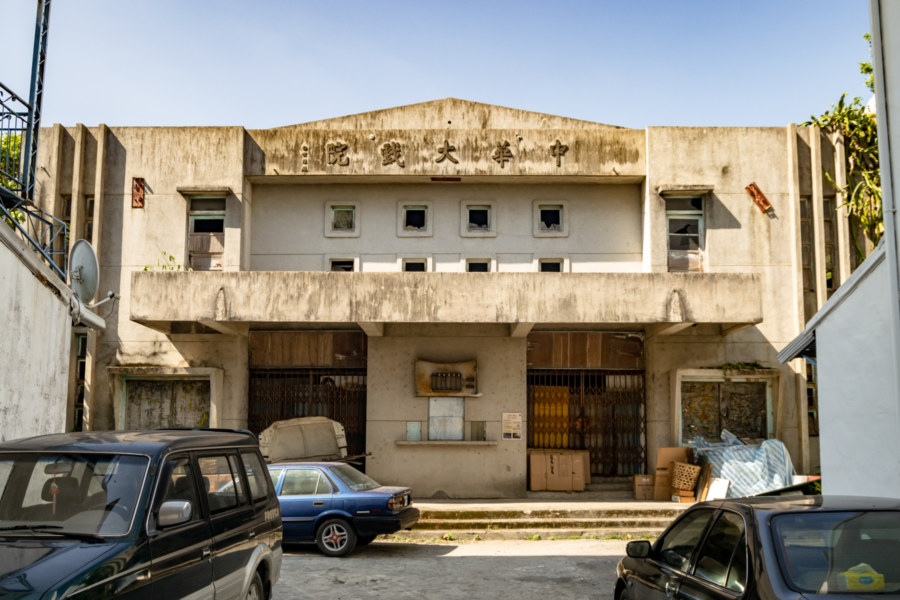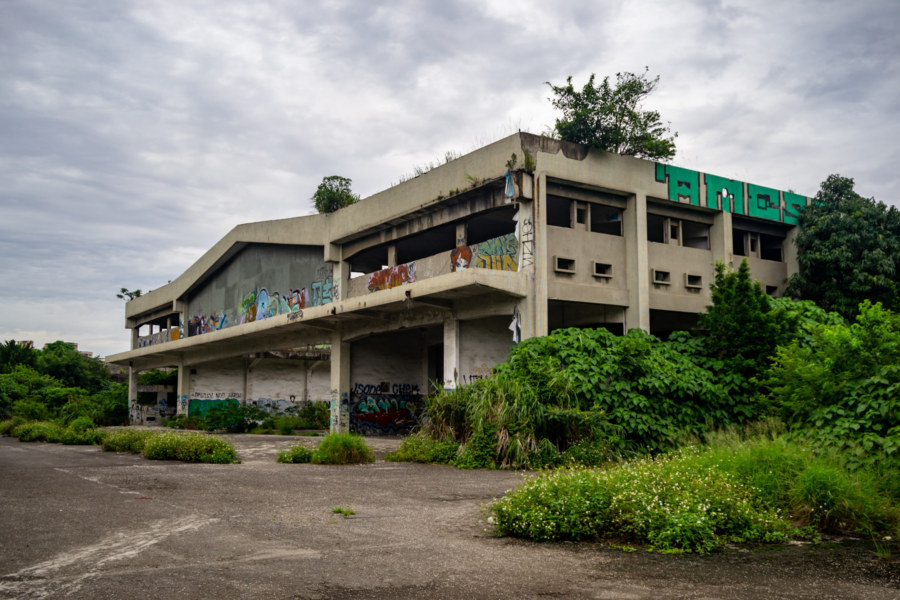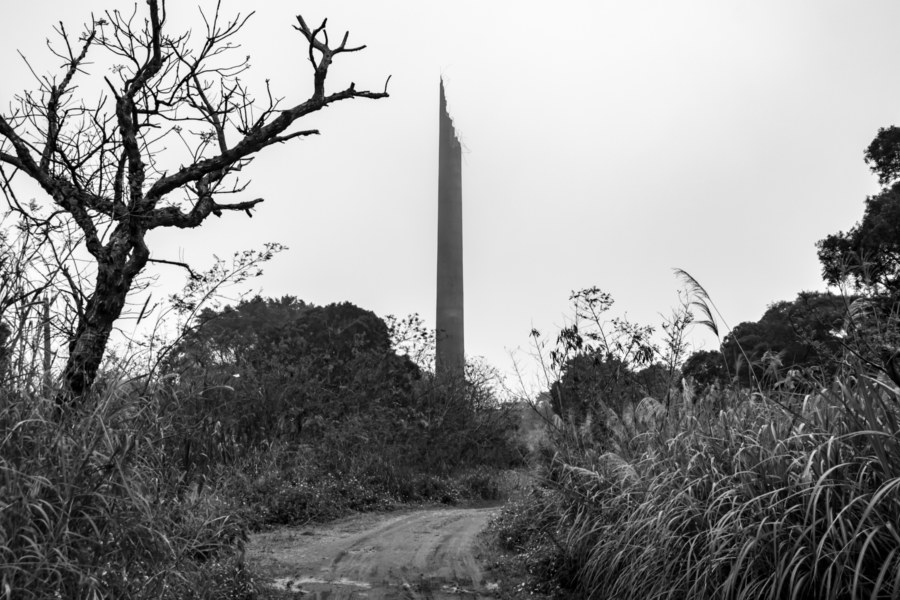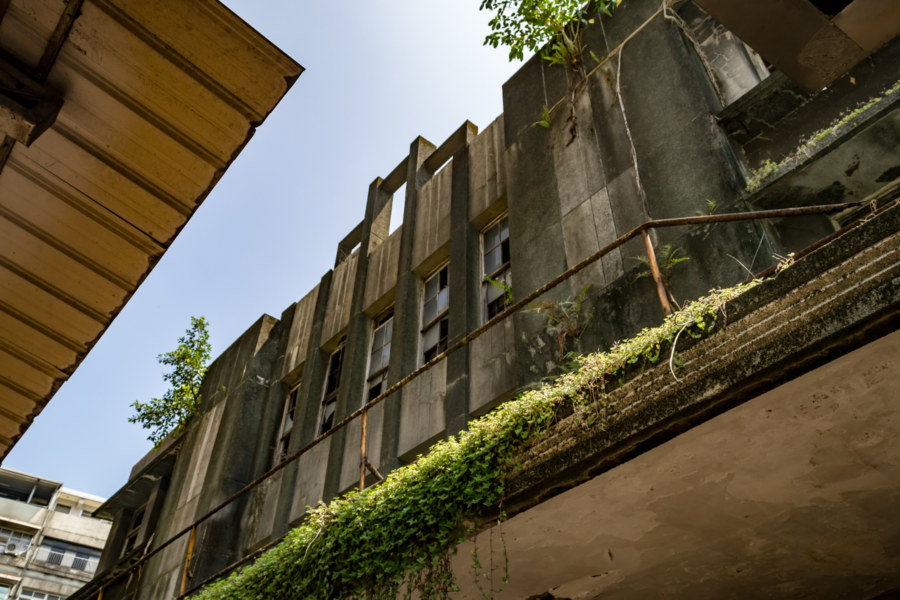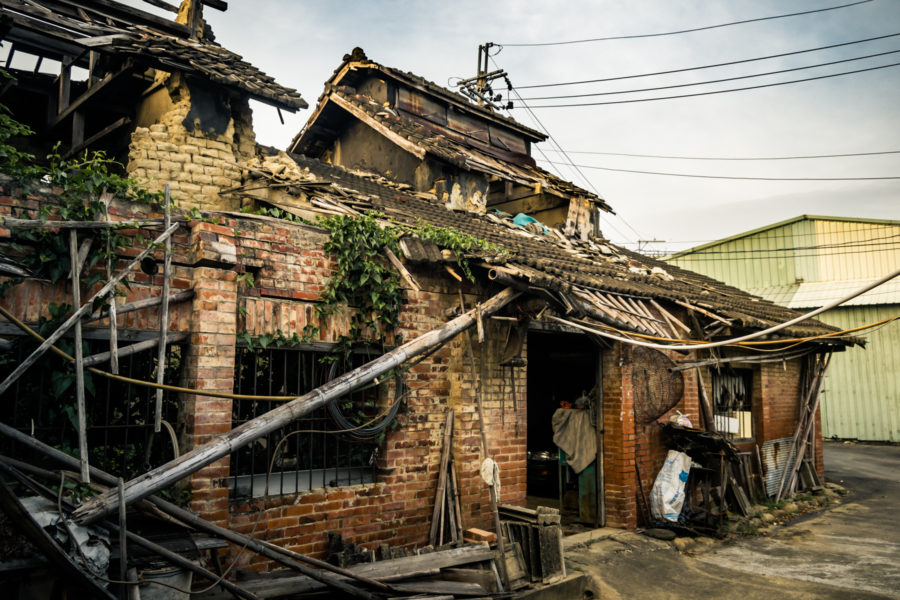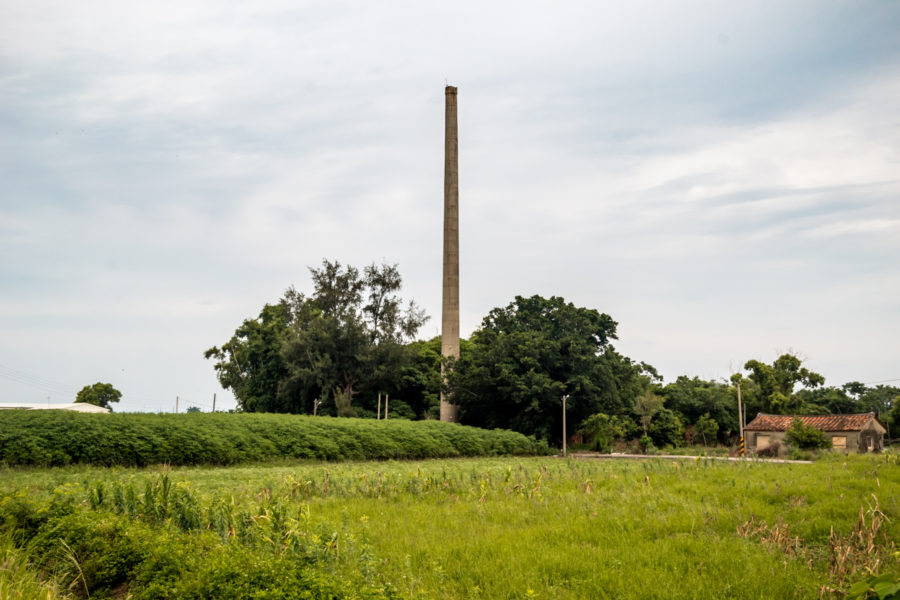Jīnxīng Theater 金星大戲院 is located in the small town of Zhīběn 知本 on the southern outskirts of Taitung City, Taitung, in southeastern Taiwan. Zhiben is home to the Katipul group 卡地布部落 of the Puyuma people 卑南族, one of Taiwan’s recognized Indigenous groups, but this theater was constructed in 1967 to cater to the many KMT veterans who settled here after the completion of the Central Cross-Island Highway 中部橫貫公路. Named after Venus (literally “Golden Star” in Chinese), it went out of business shortly after it was sold to a lumber company in 1980 and has been abandoned ever since.
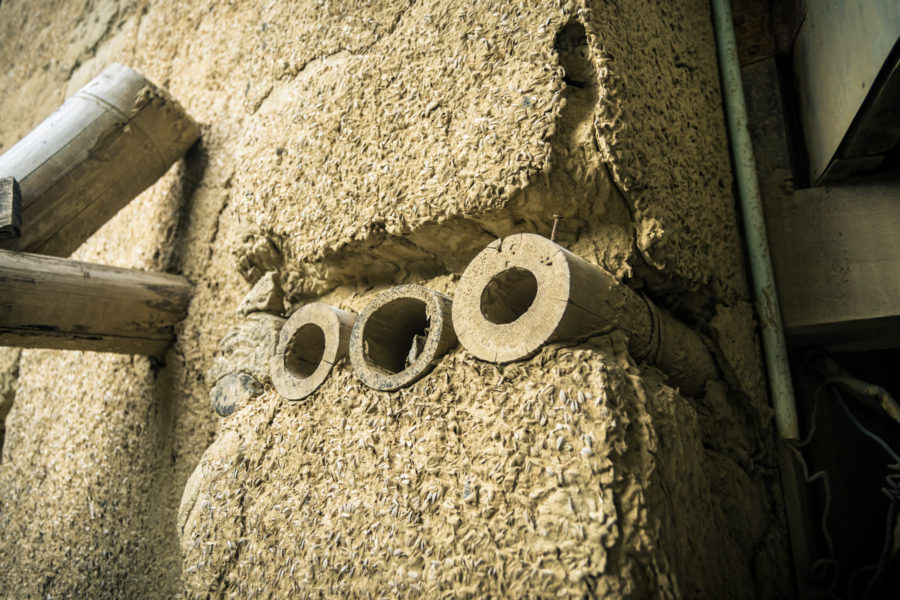
A means of organizing content around building material.
Adjacent Terms
Bang Sue Railway Cemetery
Bang Sue Railway Cemetery is located deep within a vast tract of land on the northwest side of Bangkok owned by the State Railway of Thailand. This land is home to Phahonyothin freight yard, the largest in Thailand, as well as numerous maintenance depots, engine shops, and other railway facilities. It is also the future site of Bang Sue Grand Station, set to be the largest railway station in Southeast Asia when construction is completed in the coming years. For decades the train cemetery hidden within these grounds has been known to urban explorers, so I decided to swing by and take a look while visiting in 2019.
Postcards From Yuanlin 員林明信片
Yuanlin is a modest settlement of approximately 125,000 residents located on the Changhua Plain (彰化平原) in eastern Changhua, Taiwan. It was formerly the most populous urban township in the nation, but Yuanlin was upgraded to a county-controlled city in 2015, second only to the administrative capital, Changhua City. Considerable work has been done in recent years to improve the urban environment of Yuanlin, and it feels like one of the few places between Taichung and Tainan that isn’t falling into disrepair and emptying out. That being said, urban decay remains widespread in Yuanlin, and there are many interesting ruins worth exploring before they disappear. For students of city planning and development this compact city also has quite a lot to offer—and in this post I aim to introduce some of its more intriguing features, mainly drawing upon photographs from 2013 to 2015, when I was spending significant amounts of time in the area.
RSEA Marble Factory 榮民大理石工廠
I chanced upon the ruins of the RSEA Marble Factory (榮民大理石工廠) while riding around the industrial park on the north side of Hualien City sometime in early 2017. It wasn’t immediately obvious what this derelict factory produced so I decided to stop and take a closer look. Although much of this sprawling site had already been cleared, a few half-demolished buildings remained. In one of these I found a pallet full of product samples and several references to marble, answering the first of many questions on my mind. But there’s always more to examine if you’re curious, so let’s dig into the archives and see what can be learned about this abandoned industrial site in Hualien, Taiwan.
Guanshan Zhonghua Theater 中華大戲院
Zhōnghuá Theater (中華大戲院) is an impressive KMT authoritarian era ruin in Guanshan, a small town of approximately 8,800 in the idyllic Huadong Valley of Taiwan. With seating for 1,200 patrons it was the largest theater in Taitung when it opened in 1965, and it soon earned the title “northern tyrant” (běibàtiān 北霸天) for dominating the cinema industry at this end of the county. What explains the existence of such a huge theater in this remote, sparsely populated place? As with the more modest and folksy Wǔzhōu Theater (五洲戲院) in neighbouring Chishang, a closer examination of regional socioeconomic history provides answers.
Taiwan Motor Transport Maintenance Depot 台灣汽車客運公司機料廠
Shulin is a heavily industrialized district of approximately 185,000 residents on the southwestern periphery of Taipei. Until recently it was home to one of the most well-known large-scale ruins in the metropolitan area: the former Taiwan Motor Transport Maintenance Depot (台灣汽車客運公司機料廠), more generally known as the Shulin Factory. This abandonment was far from secret—it was regularly used for photo and video production, airsoft and paintball games, flying drones, practicing graffiti and street art, and the occasional underground techno party. It was so popular, in fact, that it attracted several con artists who impersonated security guards and the property owner to charge a fee for usage of the site, occasionally extorting large sums from more professional operations, which eventually led to their arrest. As for the history of the site itself, Tobias at Only Forward has published an extremely thorough account of this ruin, and I don’t have very much to add apart from my own original photos from two separate visits to the now-vanished site.
Linkou Shengtai Brick Kiln 林口勝泰磚窯
Linkou, now the fastest-growing suburban district in the greater Taipei area, was once home to more than 30 brick factories, the highest concentration in northern Taiwan. Shèngtài Brick Kiln (勝泰磚窯), at the far northern extent of the Linkou Plateau, is one of the last remnants of this once-flourishing brick-making industry. Numerous ruins can be found across the sprawling site but the most impressive is a Hoffmann kiln, easily identified by its broken chimney. Hoffmann kiln technology was introduced to Taiwan during the Japanese colonial era but this particular kiln only dates back to the mid-1960s, and it has now been abandoned for many decades.
Keelung Dahua Theater 基隆大華戲院
Dàhuá Theater 大華戲院 is an early post-war movie theater in the grim northern port town of Keelung City, Taiwan. It was in business as early as 1949 and officially registered by 1952. Beyond that, little trace of it can be found online. Until recently I assumed this theater had been demolished, just like every other vintage standalone in downtown Keelung, one of the most densely-packed urban environments in the nation. Acting on a tip that a signboard was still in place I went to scope it out one afternoon in 2018—and was completely surprised to find the theater still standing, albeit in an extremely dilapidated condition.
Dongping Tobacco Barn 東平菸樓
Only traces remain of the tobacco cultivation and manufacturing industry in Taichung, Taiwan. For the better part of a century tobacco was cultivated across wide swathes of the Taichung Basin 台中盆地, cured on location, sold at regional marketplaces, and shipped to factories for further processing into cigarettes and other tobacco products. Taiwan’s accession to the WTO in 2002 marked the end of domestic tobacco production but the industry was already in steep decline, a consequence of globalization and the end of the government monopoly system in preceding decades. Several buildings related to Taichung’s tobacco industry have earned heritage status in recent years—but this decaying tobacco barn hidden down an laneway in Taiping, a suburban district on the eastern side of the burgeoning metropolis, is not among them.
Shuangxikou Brick Kiln 雙溪口磚窯
Recently I wrote about the Liùjiǎo Brick Kiln 六腳磚窯, an obscure abandonment in rural Chiayi, Taiwan. While attempting to find out more about that kiln I found a reference to a second abandoned kiln in the area, the Shuāngxīkǒu Brick Kiln 雙溪口磚窯, informally named after the closest village in neighboring Puzi. Weeks after visiting the first kiln I returned to scope out the second and—insofar as I can tell—only other remaining brick kiln in this expanse of the Chianan Plain 嘉南平原. It was a hazy, grey day out there so these photos aren’t nearly as nice as those of the other kiln, but in the interest of adding a little something to the historic record I’m sharing them here anyway.
